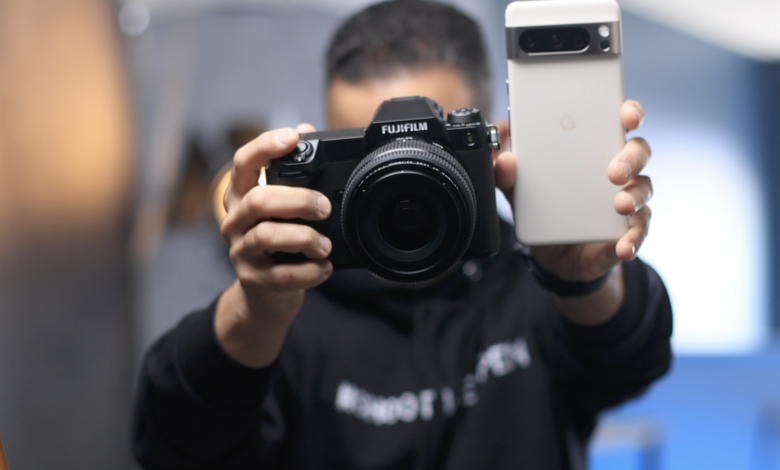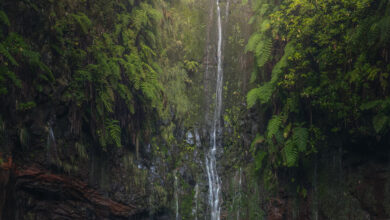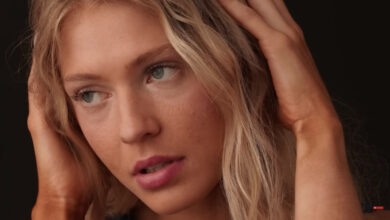Google Pixel 8 Pro Camera Versus 40- and 50-Megapixel Mirrorless Cameras

The Google Pixel 8 Pro has a ton of camera features, including a whopping 50-megapixel sensor that allows raw and manual shooting, but how does it compare to mirrorless cameras, including one with a 50-megapixel medium format sensor?
I’ve been using the Pixel 8 Pro as my main phone for about a month now, and I have to say that there is a lot to love about it. For this review, however, I am focusing on the camera features, specifically comparing the Pixel 8 Pro raw files to those from my various Fujifilm cameras.
We’ve all been there. You’re going out with the family, or heading to an event like a concert, and although you want to bring your camera, you don’t want to lug it along. If you bring it with you, it can be an inconvenience, especially if you have small children. If you leave it home, however, you most likely will regret not having it because your cell phone just doesn’t meet your standards for the quality of photos you want. And this is exactly where a cell phone with an amazing camera that has robust features can be the perfect fit. You don’t need to carry anything else with you, and you do not have to sacrifice image quality for convenience. The Google Pixel 8 Pro might be the phone that gives us the best of both worlds.
Lots of Manual Control
The Pixel 8 Pro has a ton of manual control for photographers, albeit with some limitations. For instance, the camera lets you control the shutter speed and the ISO, but not the aperture. You can, however, set manual white balance, and you can even manually focus if you wish to, and the phone has a built-in focus peaking mode to help. While I was at the pumpkin patch, I decided to take some photos in portrait mode, and when I got home, I discovered another limitation, which is that you can’t capture raw images while in the camera’s built-in portrait mode. So, take note of this if you prefer to shoot in raw. In general, the phone gives you a lot of control, but it still lacks the ease of use and ability to truly control everything manually that you get with a mirrorless camera or DSLR. Setting the shutter speed and ISO from a touchscreen is still a bit of a hassle, but in the times that you might want to or need to do so, it’s nice to have this ability built right into your phone.
Low-Light Capability
I took a Fujifilm X-T5 and the Pixel 8 Pro with me to a gig at one of my favorite venues in New York. I also took a Genaray PortaBright Monolight continuous light and an Aputure Lantern Softbox with me so I could capture some portraits of my musician friends in between sets. I took photos outside on the street, using hard light for some of the images by fitting my light with a bare reflector and then a softer light when the Aputure dome was added. The lighting situation, which had a lot of deep blacks and quite a bit of contrast proved a challenge for the Pixel 8 Pro. In this situation, the phone struggled with rendering the deep blacks while not blowing out the highlights, although it still provided good results.
Studio Lighting
Finally, I snapped a few photos of my son using the Pixel 8 Pro and a Fujifilm GFX 50S II, a 50-megapixel medium format camera that has one of the highest quality sensors you can get today. I wanted to give the phone a chance in a controlled lighting environment as well as outside in the daytime and at night, since I expected there to be a lot of variation in its performance depending on the situation.
AI Features
The Pixel 8 Pro offers a robust set of AI features. The phone can automatically delete people from the background of your image and even swap faces, if you take a series of images in a row, and create the “perfect” shot. As a professional photographer, though, these features don’t interest me so much because practically speaking, there is still a way to go before the technology can do a great job editing on its own. For instance, the masking is rough, so if a person is behind you in an image located over your shoulder, the phone will have trouble getting rid of them without cutting into your shoulder as well. Also, depending on how the background elements are situated, the results can be either good or not so good, with the camera leaving strange artifacts where the intrusive person or garbage can you removed used to be. Masking is an issue when using the camera in Portrait mode as well. In this mode, the camera creates fake bokeh to separate the subject from the background, but the edges of the subject, especially if they have a lot of hair with finely detailed edges, is not cleanly and has a smudgy look randomly around the hair and body edges.
Mostly Excellent Results
First and foremost, I must say that the images from the Pixel 8 Pro are excellent and show how far phones have come as tools for photography and serious photographers. The camera takes a raw and JPEG file simultaneously when set to raw, so there is always a JPEG for when you don’t want to mess around with editing raw files. The raw files straight out of the phone are very flat, so you should expect to do quite a bit of editing if you choose to shoot in raw. I was impressed with the raw files in a number of ways. First, the Pixel 8 Pro produces very sharp images, which hold their own even when compared to a mirrorless camera. Second, and perhaps most importantly, the images have an excellent amount of dynamic range. For instance, in the photo of my bandmate Jesse in his Halloween costume, the image as captured by the phone had half of his face blown out, with zero detail. I was shocked at how much of that detail I was able to get back by lowering the highlights slider in Capture One. The raw files certainly gave me a lot to work with, although, as I mentioned, I did have to do quite a bit of editing.
The biggest criticism I can level against the Pixel 8 Pro is regarding colors. Comparing it to Fujifilm cameras, I was not at all surprised that the colors were more pleasing and skin tones more accurate from the Fuji cameras. In my nighttime scene, the Pixel 8 Pro tended towards warm tones, although this was a tricky lighting situation since I had a daylight balanced continuous light mixed with the nighttime lighting in Queens.
Can You Leave The Camera At Home?
The biggest praise I can give the Pixel 8 Pro as a camera is this. After using it on a number of occasions side by side with some of my favorite mirrorless cameras, I can see myself leaving a bulky digital camera at home and using the phone instead without feeling like it’s a huge compromise. The shooting experience itself, although still not as fun as a mirrorless or DSLR camera, offers a lot to love, and the raw image quality gives us photographers the ability to continue to create stellar images without lugging the camera along. The Pixel 8 Pro is perfect for those times when I want to enjoy a day out with the family, or go to a ball game, or walk around the city, but I don’t want to drag along a camera. This is the first cell phone for which I can say that is true.






